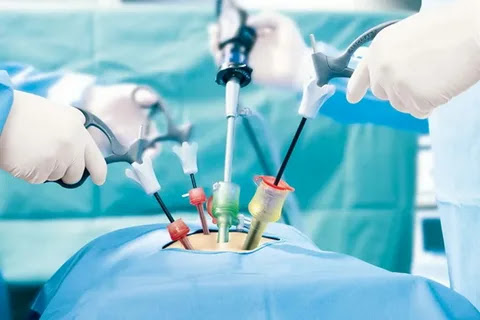Minimally Invasive Surgery, Operations Are Differentiated By Smaller Surgical Incisions In The Patient's Body.
Minimally Invasive Surgery
Minimally invasive Surgery is distinguished by smaller incisions made in the patient's body for surgical treatment of a disease or condition, resulting in less trauma to the patient and a faster recovery period. Robotic surgery and non-robotic minimally invasive surgery are both types of minimally invasive surgery (endoscopic).
Doctors utilize a number of procedures in minimally invasive
surgery to operate with less damage to the body than in open surgery. Minimally
Invasive Surgery is connected with reduced discomfort, a shorter hospital
stay, and fewer complications in general. One of the first types of minimally
invasive surgery was laparoscopy, which involved performing surgery through one
or more small incisions while using small tubes, tiny cameras, and surgical
instruments. Robotic surgery is another sort of minimally invasive surgery. It
provides an enlarged, three-dimensional image of the surgical site, allowing
the surgeon to work with greater precision, flexibility, and control. Minimally
invasive surgery benefits people with a wide range of illnesses due to ongoing
advancements. If you require surgery and believe you might be a candidate for
Discuss this method with your doctor.
With Minimally Invasive
Surgery, your surgeon can employ techniques that reduce the size and
number of cuts, or incisions, that must be made. It is generally thought to be
safer than open surgery. You'll usually recover faster, spend less time in the
hospital, and be more comfortable while you're recovering.
In traditional open surgery, your surgeon makes a single big
cut to access the area of your body being operated on. Your surgeon will use
small equipment, cameras, and lights that will fit through multiple tiny cuts
in your skin during minimally invasive surgery. This enables your surgeon to
perform surgery without having to cut through a lot of skin and muscle. Some
minimally invasive procedures are performed with robotic technology, which
allows for more exact control over the procedure. Other than that, Invasive
procedures are performed without the use of a robot. Continue reading to learn
about the various types of minimally invasive procedures, the illnesses that
can be addressed, and the benefits and dangers associated with each type.
Minimally invasive treatments (also known as minimally
invasive surgeries) are surgical techniques that reduce wound healing time,
associated discomfort, and infection risk by limiting the size of incisions
required. Surgery is, by definition, intrusive, and many surgeries requiring
large incisions are referred to as open surgery. Open surgery incisions can
occasionally create huge wounds that are unpleasant and take a long time to
heal. Medical technology advancements have enabled the development and widespread
usage of minimally invasive surgery. Endovascular aneurysm repair, for example,
has become the most prevalent way of fixing abdominal aortic aneurysms in the
United States as of 2003. The treatment uses far smaller incisions than the equivalent
open surgical approach aortic surgery.




Comments
Post a Comment